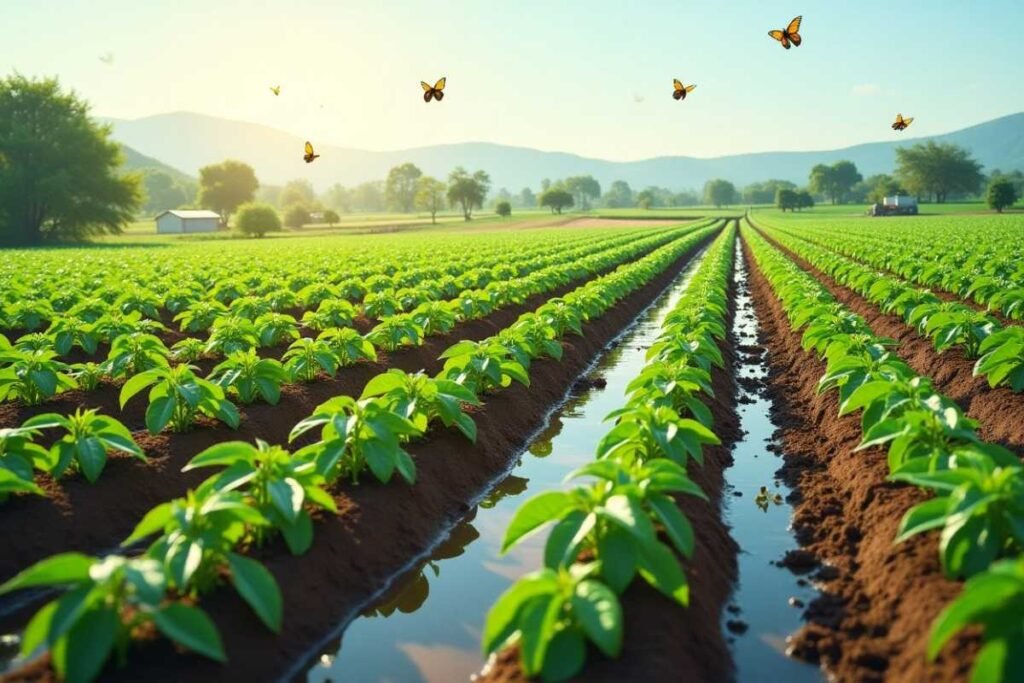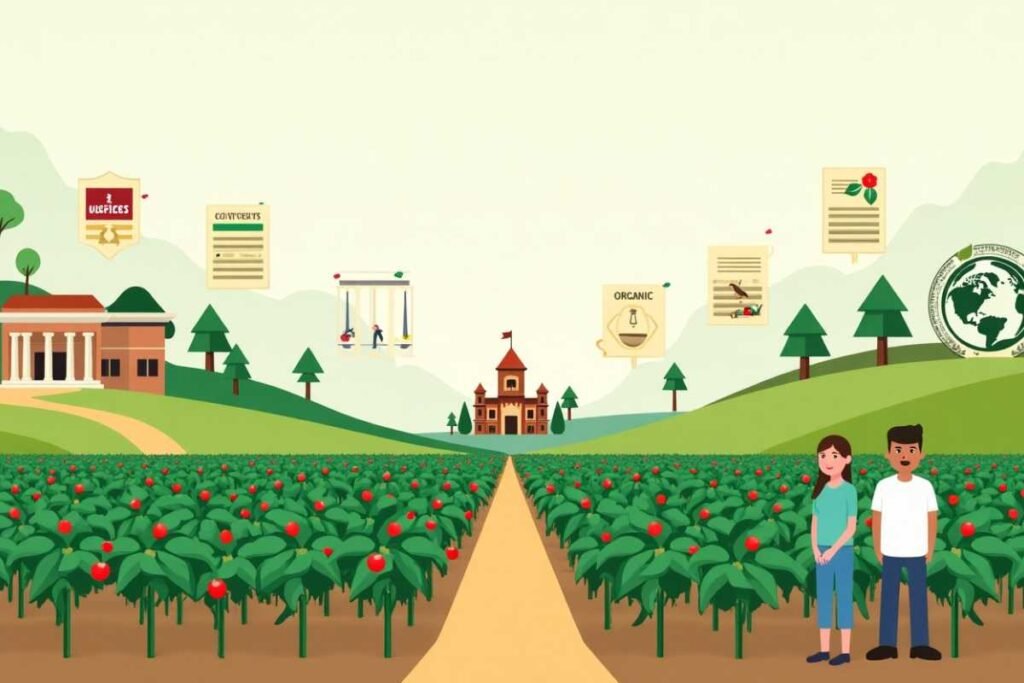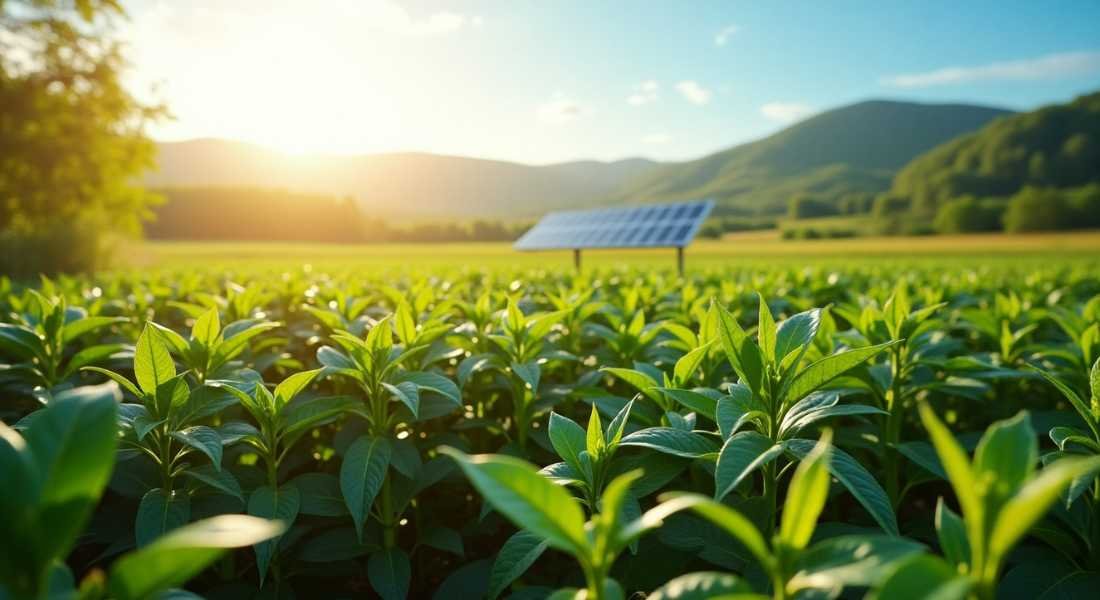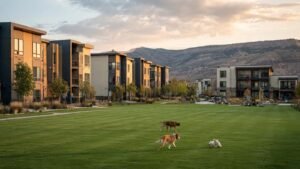Pepper environmental is more than just a trending phrase it represents the growing need to integrate sustainability into every part of our lives.
In today’s world where climate change and biodiversity loss are urgent concerns exploring Pepper environmental helps us understand how agriculture, ecosystems, and human development can coexist responsibly.
In this guide we will dive deep into the meaning of Pepper environmental its importance, its benefits, and the step by step strategies that communities and industries can adopt.
By the end you’ll have a clear understanding of why Pepper environmental is shaping the future of sustainability.
What is Pepper Environmental? Definition and Basics

Pepper environmental refers to a comprehensive approach to environmental sustainability, with a special focus on agriculture, resource management, and ecological balance.
At its core, it emphasizes using natural methods to enhance soil health, conserve biodiversity, and protect water resources while ensuring long-term food security.
Unlike narrow environmental terms Peppe’r environmental brings multiple entities together. It includes sustainable farming practices, organic farming techniques, eco-friendly technologies, and environmental policies that guide nations toward climate resilience.
From local community farming projects to large scale agroecology initiatives Peppe’r environmental provides a framework for reducing greenhouse gas emissions, improving crop yields, and protecting ecosystems from degradation.
It isn’t just a farming practice it’s an ideology that integrates environmental awareness into lifestyle, governance, and global food systems.
The Benefits and Importance of Pepper Environmental
Promotes Sustainability
Sustainability is the foundation of Peppe’r environmental. By shifting from chemical-heavy practices to organic farming and regenerative agriculture we ensure resources like soil and water remain available for future generations.
This creates resilient ecosystems capable of adapting to climate change.
Tackles Climate Change
One of the most pressing issues today is climate change. Peppe’r environmental focuses on reducing agricultural emissions, capturing carbon in soils, and promoting carbon sequestration.
These measures directly reduce the carbon footprint of food systems making agriculture part of the climate solution rather than the problem.
Conserves Biodiversity
Biodiversity ensures the survival of countless species from pollinators like bees to microorganisms that enrich soil fertility.
Peppe’r environmental practices such as habitat preservation, crop rotation, and agroforestry safeguard these living systems, ensuring that ecological balance remains intact.
Improves Soil Health
Soil health is central to productive farming. Practices like composting, crop rotation, and organic fertilizers enrich the soil with nutrients while preventing erosion.
Peppe’r environmental links soil quality to food quality showing that healthy soil creates healthier communities.
Ensures Food Security
Global population growth demands a reliable food system. Peppe’r environmental ensures food security by maintaining high crop yields through sustainable farming while reducing dependency on harmful agrochemicals.
It balances production with ecological responsibility.
Step by Step Guide: How to Implement Pepper Environmental Practices!
Step 1: Assess Soil and Water Resources
The first step is to analyze the condition of soil and water. Farmers and communities must identify levels of fertility contamination, or erosion.
This helps in selecting the right techniques, whether it’s organic farming, regenerative agriculture, or permaculture.
Step 2: Transition to Organic Farming
Organic farming avoids synthetic fertilizers and pesticides focusing instead on natural pest control and nutrient management.
Farmers can adopt composting, organic pesticides, and crop diversity to gradually phase out chemical use while preserving yields.
Step 3: Reduce Carbon Footprint
To lower carbon footprint, Peppe’r environmental suggests integrating renewable energy into farming, reducing food waste, and practicing carbon sequestration through agroforestry.
This not only mitigates greenhouse gases but also creates long term resilience against climate change.
Step 4: Promote Agroecology
Agroecology is the science of designing agricultural systems based on ecological principles. It combines biodiversity, ecosystem services, and cultural knowledge to create sustainable farming methods.
Communities that adopt agroecology find themselves less dependent on external inputs making them more self reliant.
Step 5: Conserve Water Resources
Irrigation practices must shift to efficient systems like drip irrigation. Rainwater harvesting and smart water management are also vital for conserving water resources.
Peppe’r environmental integrates these techniques to balance agricultural demands with ecosystem needs.
Step 6: Support Environmental Policies
No sustainable practice can thrive without supportive policies. Governments and NGOs must establish regulations that encourage organic certification provide subsidies for sustainable practices, and penalize harmful activities like deforestation.
Peppe’r environmental thrives when policies and people work together.
Step 7: Build Community Awareness
Environmental education and awareness campaigns help communities adopt eco friendly lifestyles.
From urban farming projects to local food systems Pepper environmental works best when communities actively participate in sustainable change.
Pepper Environmental and Climate Change
Pepper environmental plays a pivotal role in the battle against climate change. Agriculture contributes significantly to greenhouse gases but through practices like carbon sequestration, sustainable land management, and agroecology we can reduce this impact.
By focusing on regenerative agriculture and sustainable supply chains Pepper environmental minimizes emissions from food production and ensures resilience during climate adaptation.
This approach not only mitigates current risks but also builds a safer foundation for future generations.
Pepper Environmental in Agriculture and Food Security
Agriculture is at the heart of Pepper environmental. Traditional farming practices often degrade soil, overuse water, and reduce biodiversity.
In contrast sustainable agriculture under the Pepper environmental framework emphasizes crop diversity, soil fertility, and ecological balance.
By adopting regenerative landscapes and conservation practices farmers improve crop yields without relying on chemical intensive farming. This results in stable food production, improved nutrition, and stronger food sovereignty.
Food security becomes achievable when agriculture aligns with sustainability. Pepper environmental ensures that communities are not only fed but fed in ways that protect the planet.
The Role of Environmental Policies in Pepper Environmental

Policies and regulations form the backbone of environmental initiatives. Pepper environmental emphasizes the need for strong environmental policies that regulate agrochemicals encourage organic certification, and promote biodiversity conservation.
International frameworks like the Paris Agreement push nations to integrate climate resilience into agriculture.
Local governments also play a role by supporting sustainable livelihoods, providing incentives for community farming, and enforcing conservation laws.
Without policy support sustainable practices may remain limited. With effective regulations, Pepper environmental can transition from concept to widespread reality.
Conclusion
Pepper environmental is more than a framework it’s a commitment to sustainability, biodiversity, and climate resilience.
By integrating organic farming, soil health, water resource management, and strong environmental policies, it provides a roadmap for sustainable agriculture and global food security.
The urgency of climate change and ecological collapse makes Pepper environmental not optional but essential.
It represents a path where farming coexists with ecosystems, where food production supports biodiversity, and where human progress aligns with environmental stewardship.
As communities governments, and industries embrace Pepper environmental we edge closer to a future where ecological balance and human needs thrive together.
FAQs
What is Pepper environmental?
Pepper environmental is a sustainability focused approach combining agriculture, biodiversity, and environmental policies to ensure food security and climate resilience.
How does Pepper environmental reduce carbon footprint?
It promotes organic farming, agroforestry, and carbon sequestration practices that lower greenhouse gas emissions from agriculture.
Why is soil health important in Pepper environmental?
Healthy soil enhances crop yields, improves food quality, and captures carbon making it vital for sustainable agriculture.
Can Pepper environmental improve food security?
Yes by focusing on crop diversity, ecological balance, and sustainable farming it ensures long term food production and availability.
How do environmental policies support Pepper environmental?
Policies regulate harmful practices, encourage organic certification, and provide incentives for sustainable land management.
What role does biodiversity play in Pepper environmental?
Biodiversity supports pollinators, soil fertility, and ecosystem services all of which are crucial for resilient farming systems.






